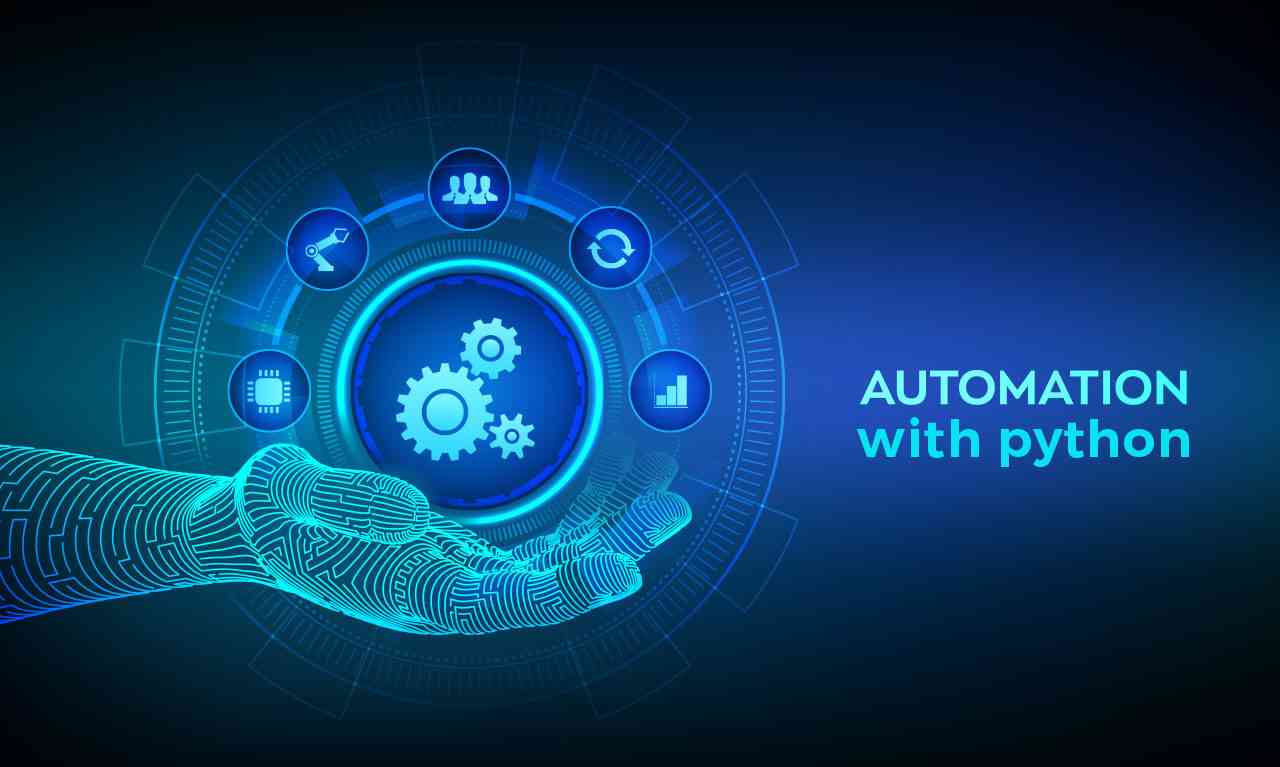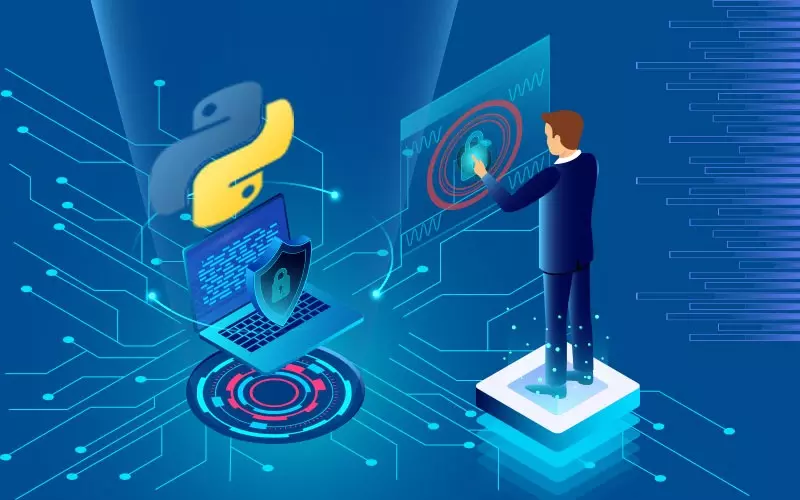Python Automation: Streamlining Workflows in 2023
In today’s fast-paced digital world, businesses and individuals alike are constantly seeking ways to optimize their workflows and increase productivity. Python automation has emerged as a powerful solution, providing a versatile and efficient approach to streamline various tasks. In this article, we will explore the concept of Python automation and its significance in simplifying workflows in 2023.
Introduction to Python Automation
Python is a popular programming language known for its simplicity and versatility. Automation refers to the process of automating repetitive tasks or workflows, reducing manual effort and increasing efficiency. Python leverages the power of programming to automate a wide range of tasks, from file manipulation to web scraping and beyond.
Benefits of Python Automation
This type of automation offers numerous benefits to individuals and organizations:
- Increased Efficiency: By automating repetitive tasks, Python reduces manual effort and accelerates workflows, allowing professionals to focus on more valuable work.
- Improved Accuracy: Automation eliminates human errors, ensuring consistent and accurate results.
- Time Savings: With Python automation, tasks that would otherwise take hours or days to complete can be executed in a fraction of the time.
- Cost Reduction: By streamlining workflows, organizations can save costs associated with manual labor and optimize resource allocation.
- Flexibility and Scalability: Python’s versatility enables automation across various domains and industries, making it adaptable to different use cases and scalable as needs evolve.
Getting Started with Python Automation Following the Mention Steps.
Installing Python
- Visit the official Python website (python.org) and download the latest version of Python.
- Run the installer and follow the instructions to complete the installation process.
Choosing an Integrated Development Environment (IDE)
- Select an IDE that suits your needs, such as PyCharm, Visual Studio Code, or Jupyter Notebook.
- Install the chosen IDE and configure it to work with Python.
Familiarizing with Python Syntax
- Start by learning the basics of Python programming, including variables, data types, conditionals, loops, and functions.
- Explore Python libraries and frameworks commonly used for automation, such as Pandas, Selenium, and Requests.
Automating File and Data Manipulation
One of the fundamental aspects of Python automation is file and data manipulation. Python provides powerful libraries and tools to simplify these tasks:
Reading and Writing Files
Python’s built-in open() function allows you to read and write files effortlessly. Use the with statement for automatic resource management and to ensure proper file handling.
Parsing and Analyzing Data
Python’s data manipulation libraries, such as Pandas and NumPy, enable efficient data parsing, analysis, and manipulation. They provide a wide range of functions and methods for handling structured data.
Data Cleansing and Transformation
Python automation allows for automated data cleansing and transformation. You can use libraries like Pandas to remove duplicates, handle missing values, and convert data into the desired format.
Web Scraping and Data Extraction
Web scraping is the process of extracting data from websites. Python provides powerful tools for web scraping
Introduction to Web Scraping
Web scraping involves fetching and parsing HTML pages to extract relevant data. It enables the automation of data collection from websites, saving time and effort.
Selecting the Right Tools for Web Scraping
Python offers libraries like BeautifulSoup and Scrapy, which provide convenient methods for web scraping. Choose the tool that best suits your project requirements.
Extracting Data from Websites
With Python, you can extract data from websites by identifying the HTML elements containing the desired information and applying appropriate parsing techniques.
Automating Repetitive Tasks
Python automation shines when it comes to automating repetitive tasks. Here are some examples:
Creating Custom Scripts
Python allows you to write custom scripts to automate repetitive actions. Identify the tasks you frequently perform and develop scripts to execute them automatically.
Automating Email Communication
Python’s built-in smtplib library enables sending automated emails. You can create scripts to send email notifications, reports, or updates.
Scheduling and Running Scripts
Use scheduling tools like Cron (Linux) or Task Scheduler (Windows) to run your Python scripts at specified intervals. This ensures regular execution without manual intervention.
Integrating APIs and Services
Python automation can integrate with various APIs and services, extending its capabilities
Working with RESTful APIs
Python’s requests library allows you to interact with RESTful APIs, enabling automation of tasks like data retrieval, updates, and synchronization.
Automating API Calls
By leveraging Python automation, you can automate repetitive API calls, such as fetching data from an API endpoint at regular intervals.
Integrating with Third-Party Services
Python provides libraries to integrate with third-party services like cloud storage, project management tools, or social media platforms. Explore available libraries for seamless integration.
Data Visualization and Reporting
Python’s data visualization capabilities allow you to create compelling visualizations and automated reports:
Generating Visualizations with Python Libraries
Leverage libraries like Matplotlib, Seaborn, or Plotly to create interactive and visually appealing charts, graphs, and dashboards.
Creating Interactive Dashboards
Python frameworks such as Dash and Streamlit enable the creation of interactive dashboards. Visualize and explore data in a user-friendly manner.
Automating Report Generation
Python automation facilitates report generation by combining data analysis, visualization, and templating. Generate automated reports in various formats, such as PDF or HTML.
Ensuring Security and Error Handling
When implementing P.A it’s crucial to ensure security and handle errors effectively:
Handling Exceptions and Errors
Implement error handling mechanisms in your Python scripts to gracefully handle exceptions and prevent unexpected failures.
Implementing Data Validation and Verification
Validate input data and implement verification mechanisms to ensure data integrity and security during automation processes.
Ensuring Secure Data Handling
When working with sensitive data, adhere to security best practices. Encrypt data, use secure protocols, and follow data privacy guidelines.
Future Trends and Developments in Python Automation
It will be continues to evolve, embracing new technologies and trends. Some future developments to watch for include:
- Machine Learning Integration: Python automation combined with machine learning algorithms can enable intelligent decision-making and advanced automation.
- Natural Language Processing (NLP): NLP-powered automation can automate tasks involving text analysis, sentiment analysis, and language understanding.
- Cloud-Based: Leveraging cloud services and serverless computing, Python automation can scale effortlessly and handle more complex workflows.
- Internet of Things (IoT) Integration: Python’s versatility makes it an ideal language for automating IoT devices and integrating them into larger systems.
Conclusion
Python automation offers a powerful means of streamlining workflows in 2023. By leveraging its versatility and extensive library ecosystem, individuals and organizations can automate repetitive tasks, improve efficiency, and boost productivity. Whether it’s automating file manipulation, web scraping, or creating interactive dashboards, and it provides a flexible and scalable solution for streamlining workflows and achieving optimal results.
FAQs (Frequently Asked Questions)
Q1: Is Python automation suitable for non-programmers?
Yes, P.A can be learned by non-programmers. It make simplicity and readability to learn and make it an accessible language for beginners.
Q2: Can Python automation be used across different operating systems?
Absolutely! It is a cross-platform language, meaning automation scripts written in Python can be executed on various operating systems, including Windows, macOS, and Linux.
Q3: Is Python automation only applicable to specific industries?
No, P.A can be applied across diverse industries, including finance, healthcare, e-commerce, and more. Its versatility makes it adaptable to different use cases.
Q4: Are there any limitations to Python automation?
While Python automation is powerful, it may not be the ideal choice for computationally intensive tasks. In such cases, other languages like C++ or Java might be more suitable.
Q5: Where can I learn more about Python automation?
There are numerous online resources, tutorials, and courses available to learn Python automation. Websites like Python.org, Coursera, and Udemy offer comprehensive Python automation courses to get you started.





